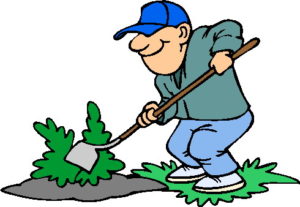It is winter, so I’m constantly reminded of good garden practices that I fail to follow through on. Maybe a public confession here, of what I know I should be doing. “What I should have done” is my garden motto.
I love my garden enough to spend almost all my free time looking for new blooms, or watching leaves unfold, smelling the flowers or just dreaming of what to plant next. The one thing I don’t do much of in the garden is WORK. Some of the basic good practices that should be second nature to me are the first things I ignore. Confession is said to be good for the soul. People ask me so many questions but do not pay attention to what I do. Or maybe I am like everyone else!

Biggest thing is I don’t add enough organic matter to the soil
I couldn’t believe the growth boost I saw after adding the first few buckets of compost to the garden or flowerbed. I could see and feel the difference in soil texture in that bed months later. Unless you garden in a former peat bog, your plants would practically kill for more organic matter in the soil. Building the soil’s organic content is an ongoing process, as organic matter also breaks down throughout the growing season. You can buy peat moss, find an OLD manure pile, or make compost. Any added organic content benefits almost any soil by improving the fertility, pH, water holding and drainage characteristics.
I ignore problems
What degree of laziness keeps me from taking quick action when I see sick plants? Ignoring them only has two possible outcomes. Either insects or disease persist, and spread, in my garden, or I advertise my ineptness as a gardener. To a real pro, every yellow leaf is a neon sign blinking “Neglected!” I guess I want to think that a shriveled stem on a potted plant will “heal” like a minor scratch on my arm, and turn green again, but it just doesn’t work that way.
Yellowed leaves, distorted stems or entire ailing specimens are a sign that something has gone wrong. The sad news is that damaged plant parts never get better looking even if that problem is corrected. The good news is that once you ease their suffering, most plants have an amazing ability to regenerate all the parts of a healthy complete plant. Removing a sick plant in the flowerbed or garden should really be done. It is hard yanking out that shriveling cucumber plant or the wilting tomato plant. Prompt correction of problems lessens the plant’s suffering and hastens its recovery.
I don’t harvest all my ripe produce
How many pounds of summer squash is laid off to the side from my garden just because I wasn’t ready to eat it? In the disorganized meanderings that are my daily normal state, I’d go to the garden for one reason, notice a few ripe berries or perfect lettuce leaves, and leave them to pick later, only to forget them later. It just seems downright wrong to waste good homegrown produce.
A May to September rule might be “Don’t go out to the vegetable garden without a small knife and a colander.” Five spinach leaves? That’s enough to stuff an extra healthy sandwich. A dozen zucchini ? Leave them on all the neighbor’s doorsteps that night. (Only one perfect asparagus spear? Eat it right in the garden and don’t tell anybody.) You are more likely to use garden gatherings when they are in the kitchen before mealtime, rather than down and dirty in the veggie patch.
I forget fertilizer
I bet my plants are hungrier than I imagine and starving them is going to lead to poor growth. I need to educate myself about the needs of plants, and what is available in my garden. Then I need to plan a menu and go grocery shopping for my plants.
Early last spring I yanked a weedling that I too late recognized as a Cleome seedling. Oh, the humanity, err, botany! I forgot I had planted the seed because that Cleome had been sown a year earlier. And I wasted a precious plot of flowerbed and suffered many fruitless searches last year for those Spider flower seedlings, all because I didn’t know what the Cleome needed to sprout.
Those gorgeous specimens at the nursery or in the catalog are at their peak, but what will they look like at other times of the year, and under the conditions they’ll find in your garden? Making educated plant selections can prevent disappointment and save money. Unusual perennials may thrill experienced gardeners, yet sorely disappoint the novice with innocent misconceptions of short blooming season. With modern merchandising, a literal world of plant choices need to be carefully weeded through to find the ones that really meet our expectations.
I don’t prune properly
Persistent trial, and my fair share of error, has given me many chances to see the results of my pruning and learn what works. As I said earlier, most plants have an amazing ability to grow new parts when given half a chance. Still I hesitate to prune. I felt faint when I read instructions to reduce my new apple’s canopy by almost half!
Pruning questions plague many gardeners. Don’t let fear of hurting the plant keep you from pruning when it’s needed. Good pruning can prevent injury or disease. Good pruning does not damage a plant, any more than a haircut damages you. Proper pruning is just a management technique that allows us to grow a wider variety of specimens, or that modifies a plants natural growth to achieve results more pleasing to the gardener or farmer. Deadheading flowers is though and time consuming.
Can I remember 7 rules?
Read about new plants
Build the soil
Prune when needed
Treat problems before they become problems
Feed the hungry
Harvest (maybe learn to process) when ready
Do my best
